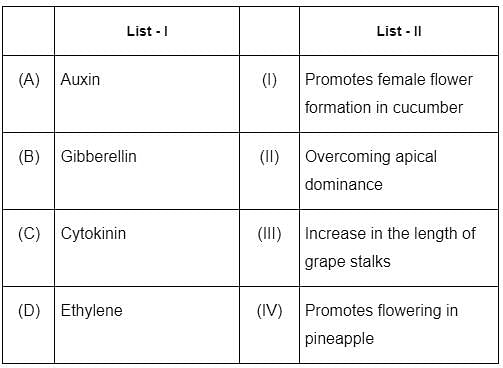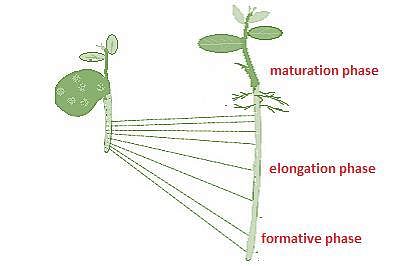Biology: Topic-wise Test- 4 - NEET MCQ
30 Questions MCQ Test - Biology: Topic-wise Test- 4
In a growing plant, the first phase during the process of growth is
Which of the following is not correct about the Krebs cycle?
Visible part of electromagnetic spectrum consists of radiations having a wavelength in the range of
If a part of pith from the stem of a plant is used as an explant and cultured on nutrient medium, which of the following processes is responsible for the formation of an undifferentiated mass of cells called callus?
Respiratory substrates are the organic substances which are ________ during respiration to liberate energy.
The organism which depend on the dead and decaying organic matter is:
Which of the following is essential for fruit ripening?
Which of the following reactions is catalysed by the enzyme phosphofructokinase?
Match List - I with List - II.

Choose the correct answer from the options given below :
The given figure shows growth of two leaves over the period of one day. If, AG = absolute growth and RGR = relative growth rate, then select the correct option.

Dough kept overnight in warm place becomes soft and spongy due to:
Which one of the following equations suggests that O2 released during photosynthesis comes from water?
Increase in girth (diameter).of plant as a result of the activities of lateral meristems is called _______________.
Mitochondria are called the powerhouses of the cell. Which of the following observations support this statement?
Which one of the following concerns with photophosphorylation :-
[AIPMT–2003]
Krebs cycle is both catabolic and anabolic because it provides
Algae and other submerged plants bount in water during day time and sink at night, because
The site in chloroplast which is responsible for trapping for light energy is:
Growth at cellular level, is principally a consequence of increase in the amount of






















